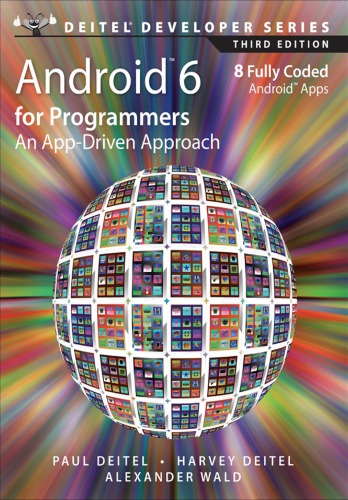

Most ebook files are in PDF format, so you can easily read them using various software such as Foxit Reader or directly on the Google Chrome browser.
Some ebook files are released by publishers in other formats such as .awz, .mobi, .epub, .fb2, etc. You may need to install specific software to read these formats on mobile/PC, such as Calibre.
Please read the tutorial at this link. https://ebooknice.com/page/post?id=faq
We offer FREE conversion to the popular formats you request; however, this may take some time. Therefore, right after payment, please email us, and we will try to provide the service as quickly as possible.
For some exceptional file formats or broken links (if any), please refrain from opening any disputes. Instead, email us first, and we will try to assist within a maximum of 6 hours.
EbookNice Team

Status:
Available5.0
33 reviews
Practical, Example-Rich Coverage of:
Visit www.deitel.com
About This Book
The first-generation Android phones were released in October 2008. As of June 2015, Android had 82.8% of the global smartphone market share, compared to 13.9% for Apple and 2.6% for Microsoft (http:// www.idc.com/prodserv/smartphone-os-market-share.jsp). Billions of apps have been downloaded from Google Play and more than one billion Android devices were shipped worldwide in 2014 (http://www.cnet.com/news/android-shipments-exceed- 1-billion-for-first-time-in-2014/). The opportunities for Android app developers are enormous.
This book presents leading-edge computing technologies for professional software developers. At the heart of the book is the Deitel app-driven approach–concepts are presented in the context of complete working Android apps, rather than using code snippets. The introduction and app test drives at the beginning of each chapter show one or more sample executions. The book’s source code is available at http://www.deitel.com/books/AndroidFP3.
The apps in this book were carefully designed to introduce you to key Android features and APIs. You’ll quickly learn everything you need to start building Android apps–beginning with a test-drive of the Tip Calculator app in Chapter 1, then building one new app in each of Chapters 2 through 9. By the time you reach Chapter 10, you’ll be ready to create your own apps for submission to Google Play and other app marketplaces. You’ll master the Google Play submission process, including uploading your apps. You’ll decide whether to sell your apps or offer them for free, and learn how to market them via social media and monetize them with in-app advertising, in-app billing, virtual goods and more.